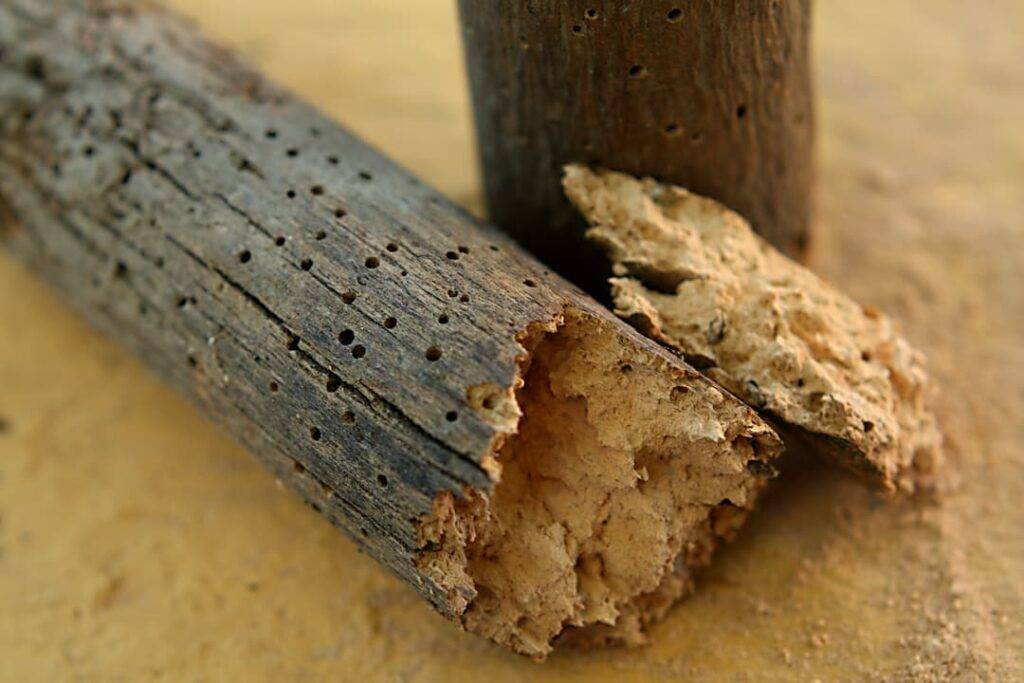Woodworm, a common household pest, spreads primarily through the life cycle of beetles, from egg-laying to larval feeding and adult emergence. Understanding this process is crucial for preventing and managing infestations in your home. Let’s look deeper into the mechanisms behind woodworm spread and how you can protect your wooden structures.
What Is Woodworm?
Woodworm is the term used to describe the larvae of various species of beetles that infest and eat wood. The most common types include the Common Furniture Beetle, the Deathwatch Beetle, and the House Longhorn Beetle. These larvae burrow into wood, creating tunnels as they consume the material, which can significantly weaken the structure over time.
Signs And Prevention
There are some telltale signs of woodworm infestation that we’ve covered in previous articles. However, to help with context and education we’ve listed them briefly below along with standard prevention methods:
Signs
- Small, round holes in woodwork
- Fine, powdery dust around these holes (known as frass)
- Crumbling wood edges
- Damaged and weakened wood structures
- Adult beetles emerging from holes
Prevention Methods:
- Keep wood dry and well-ventilated to prevent damp, which attracts woodworm
- Use treated wood that is resistant to beetle infestations
- Regularly inspect wooden items and structures for signs of woodworm
- Maintain low humidity levels in your home
- Apply treatment products to susceptible wood

So, How Does Woodworm Actually Spread Throughout A Property?
Woodworm spreads primarily through the adult beetles laying eggs in wood. When the eggs hatch, the larvae burrow into the wood to feed, creating the tunnels and damage characteristic of woodworm infestations. The process begins when adult beetles, often attracted to damp or decaying wood, lay their eggs on the surface or in cracks of the wood.
Once the eggs hatch, the larvae immediately start to bore into the wood, where they can remain hidden for several years, feeding and growing. During this time, the woodworm larvae create extensive networks of tunnels within the wood, which weakens the structure and can lead to significant damage.
As the larvae mature into adult beetles, they eventually emerge from the wood to mate and continue the life cycle. This emergence creates the tell-tale exit holes, which are often the first visible sign of an infestation. The adult beetles then seek out new wood sources to lay their eggs, thus spreading the infestation to other areas of the home or to new locations entirely.


